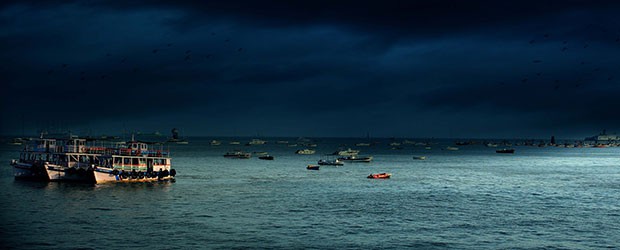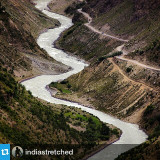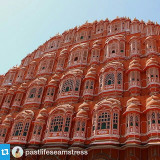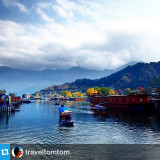Random image from our India photo collection

Jharkhand
History
Not much is known about the early history of this region. Jharkhand was covered in the hills and forests inaccessible to a large segment of people. The tribes of this state are living here from thousands of years and not much changed in their lives and cultures over the ages, barring the last few decades.
There are many places in the state, especially in the district of Hazaribagh, Koderma, and Giridih where one can find rock paintings in the caves drawn by the earlier tribal people, showing their lives and cultures at that time.
Many scholars now believe that the language used by tribes in the state of Jharkhand is identical to the one used by Harappan people. This has led to a great interest in the deciphering of Harappan inscriptions using rock paintings and language used by these tribes.
For a greater part of the Vedic age, Jharkhand remained masked. During the age of Mahajanpadas around 500 BC, India saw the emergence of 16 large states that controlled the entire Indian subcontinent. The supremacy of the janpads was often decided by the power of swords, bows, axes and other weapons.
The region around Jharkhand was extremely rich in its mineral resources, including iron. The janpad that controlled this region, Magadha, eventually controlled most of the country. The power of Magadha continued for a long time and he occupied the central states in the Indian subcontinent for a long time. He also witnessed the emergence of mighty empires such as the Mauryas and the Guptas.
After the end of the empire of the Guptas, India saw the emergence of numerous regional powers who tried to control this region. Same was the case with Muslim Sultans of Delhi and their feudatories in Bengal, who tried to control this mineral-rich area.
The British identified this region as a great source of raw material for their booming industries back at home and exploited this region to its full potential and established a vast network of railway lines to help in exporting these minerals. Calcutta was developed as a major port to export raw materials from this region to England.
Birsa Munda (1875-1900) and, Sidhu and Kanho are the legendary heroes of the tribals of this state, who fought against the oppressive rule of the British government. Birsa Munda, now regarded as god, fought for the tribals natural rights over the forest and land that was mercilessly being acquired by the British for exploitation.
After a long fight, Birsa Munda was captured by the British authorities and died in prison. Sidhu and Kanho were another set of revolutionaries among the tribals, now regarded as the tribal heroes.
For a long time, Jharkhand remained a part of Bihar, but after Indian independence, the demand for a separate state by the tribals started gaining momentum. In the last fifty years, the tribes of this region fought against the dominating Northern Bihar which had gained tremendously from the mineral deposits of this region. Jharkhand became a state under the Republic of India on November 15, 2000 and now it is expected to make great leaps forward.
Go back
There are many places in the state, especially in the district of Hazaribagh, Koderma, and Giridih where one can find rock paintings in the caves drawn by the earlier tribal people, showing their lives and cultures at that time.
Many scholars now believe that the language used by tribes in the state of Jharkhand is identical to the one used by Harappan people. This has led to a great interest in the deciphering of Harappan inscriptions using rock paintings and language used by these tribes.
For a greater part of the Vedic age, Jharkhand remained masked. During the age of Mahajanpadas around 500 BC, India saw the emergence of 16 large states that controlled the entire Indian subcontinent. The supremacy of the janpads was often decided by the power of swords, bows, axes and other weapons.
The region around Jharkhand was extremely rich in its mineral resources, including iron. The janpad that controlled this region, Magadha, eventually controlled most of the country. The power of Magadha continued for a long time and he occupied the central states in the Indian subcontinent for a long time. He also witnessed the emergence of mighty empires such as the Mauryas and the Guptas.
After the end of the empire of the Guptas, India saw the emergence of numerous regional powers who tried to control this region. Same was the case with Muslim Sultans of Delhi and their feudatories in Bengal, who tried to control this mineral-rich area.
The British identified this region as a great source of raw material for their booming industries back at home and exploited this region to its full potential and established a vast network of railway lines to help in exporting these minerals. Calcutta was developed as a major port to export raw materials from this region to England.
Birsa Munda (1875-1900) and, Sidhu and Kanho are the legendary heroes of the tribals of this state, who fought against the oppressive rule of the British government. Birsa Munda, now regarded as god, fought for the tribals natural rights over the forest and land that was mercilessly being acquired by the British for exploitation.
After a long fight, Birsa Munda was captured by the British authorities and died in prison. Sidhu and Kanho were another set of revolutionaries among the tribals, now regarded as the tribal heroes.
For a long time, Jharkhand remained a part of Bihar, but after Indian independence, the demand for a separate state by the tribals started gaining momentum. In the last fifty years, the tribes of this region fought against the dominating Northern Bihar which had gained tremendously from the mineral deposits of this region. Jharkhand became a state under the Republic of India on November 15, 2000 and now it is expected to make great leaps forward.
Go back









